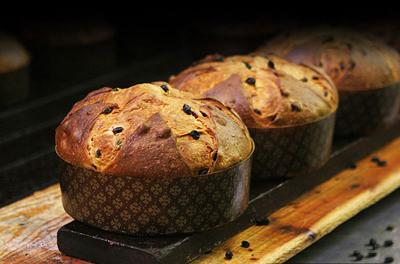"Move over Christmas pud, make room for the panettone"

ROME -- Following pizza and spaghetti carbonara, another Italian delicacy has conquered the British Isles and possibly pushed aside the classic Christmas pudding, confirming its status as a festive staple across the globe: the scrumptious Milan-born ‘panettone.’
For years, the sweet bread, traditionally filled with dried fruits, was a rare treat for the Brits. Featured on the shelves of only a scattering of supermarkets, many Christmas shoppers zipped straight down the aisle to the pudding section without giving the panettone a second glance.
This year however, indeed the year for many momentous changes, the tables have turned. It appears the British public are clinging to their European links in the wake of the controversial Brexit decision, choosing the Italian loaf over their own Christmas pudding.
The statistics emerging from high-quality supermarkets speak for themselves. In the Selfridges Food Hall, panettone is outselling Christmas pudding two to one, as their current best-selling version is caramel flavoured and costs 24.99 pounds (around 30 euros). In Waitrose, panettone sales have soared compared to 2015, showing a whopping 56 percent increase. In fact, the luxury supermarket chain sold out of the Italian favourite a month before the big day, having to make a bulk of new orders overseas.
And it’s not just the pricey stores that have pushed for panettone. Asda and Sainsburys have also caught onto the trend, launching their own ‘Made in Britain’ versions -- less expensive, yet arguably less soft and light, the breads are still based on the Milanese original but boast various different fillings. For example, Sainsbury’s are selling a 9 pounds ‘Prosecco Panettone,’ stuffed with candied chestnuts and recommended with the Italian sparkling wine that Brits are renowned for sipping at parties.
Panettone, or ‘Tony’s Bread’ in English, supposedly takes its name from the sweet loaf filled with ‘lucky’ ingredients that a poor Milanese baker used as a dowry when his daughter wanted to marry. Bakers began to produce the delicacy on mass at the start of the 20th century and the cake became Italy’s top choice on the Christmas table by the end of the Second World War due to its cheap and accessible price tag.
Nowadays the loaf is popular all over the world, and it appears that the Brits are ready to push aside their traditional flaming pud for a fluffy slice of this Italian favourite.
sw


